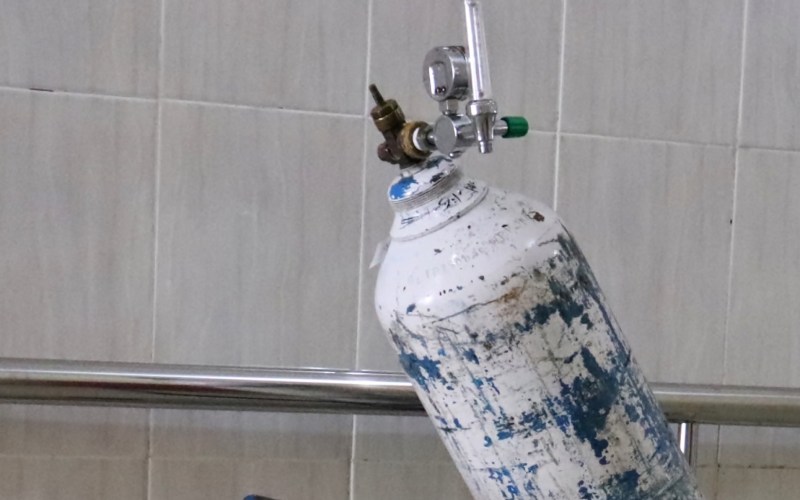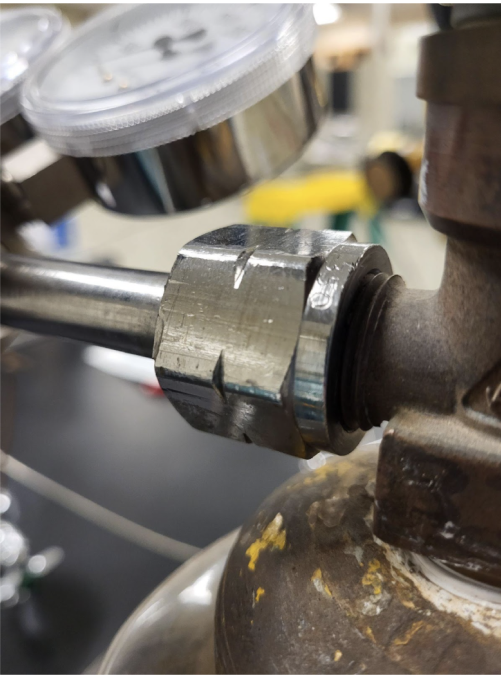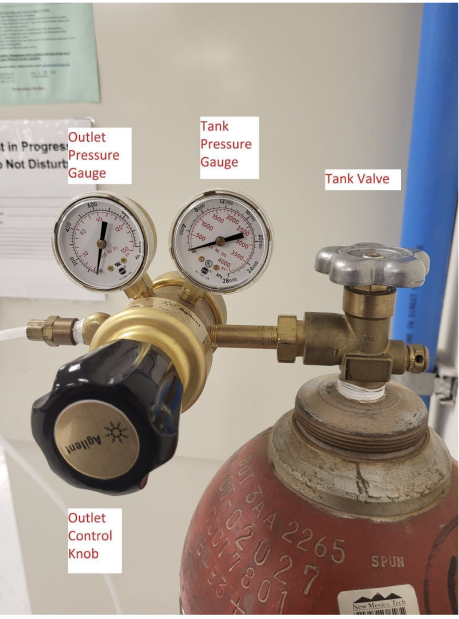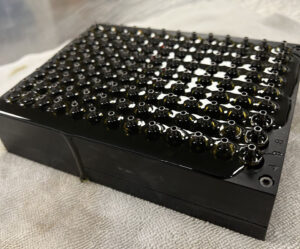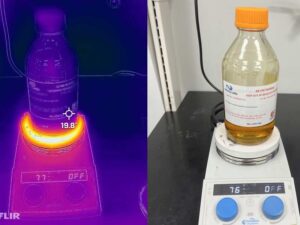Gasses and Asphyxiants General Equipment Overview
This instruction covers the safety procedures and hazards of compressed gasses and asphyxiants.
Definitions
- Gas bottle: pressurized gas storage container
- 2-Stage Regulator: device that reduces the pressure of the gas from a gas bottle to a working level
Safety Gear
- Safety goggles
- Fume hood or snorkel
- Oxygen sensor
Safety Precautions when Working with Gasses and Asphyxiants
- Always make sure gas bottles are strapped or chained to a wall, table, or other immovable object.
- Never move a gas bottle without the protective cap in place. Do not move it when the regulator is installed.
- If work must be performed alone, be sure an oxygen sensor is placed near the work area.
- Keep open flames and sparks away from gas bottles.
- Never enter a room when an oxygen sensor is alarming.
- If someone appears to be unconscious in a room with bottled gas, call for assistance and don the Self-Contained Breathing Apparatus (SCBA) before attempting to help the person.
Instructions
Setting up Gas Bottles and Installing a Regulator
- Don PPE.
- With a cart, move the bottle to where it will be used.
- Chain the bottle to the wall.
- Unscrew cap.
- Carefully thread the appropriate regulator onto the bottle.
- Tighten the nut on the regulator with the 1 ⅛” combination wrench. Tighten the nut clockwise unless the nut has cuts or marks through each corner. If there are cuts or marks on the corners, it is reverse threaded and must be tightened counterclockwise.
- Open the tank valve. After an initial “hiss”, there should be no sound of gas escaping. If it continues to hiss, close the tank valve and repeat steps 6 and 7.
Markings for reverse threading
Setting a Working Pressure
- Turn the outlet control knob counterclockwise until there is little resistance.
- Open the tank valve a quarter of a turn and listen for leaks.
- Slowly turn the outlet control knob clockwise, until the outlet pressure gauge reaches the desired pressure.
The regulator is installed on a gas bottle.
Assisting an Unconscious Person
- Call 911 immediately.
- Assume the room contains one or more asphyxiants.
- Don Self-Contained Breathing Apparatus (SCBA).
- Check the room with an oxygen meter for oxygen content.
- If the oxygen content is low or the gasses used are toxic, remove the unconscious person from the room.
- If they are not breathing, begin CPR. Follow the instructions of the paramedics, when they arrive.
- MOST IMPORTANTLY: DO NOT ENTER A ROOM OR SPACE UNLESS YOU KNOW THE AIR IS SAFE AND BREATHABLE. Most people killed by gasses are would-be rescuers! Even nitrogen, which makes up 65% of Earth’s atmosphere, can be deadly.

